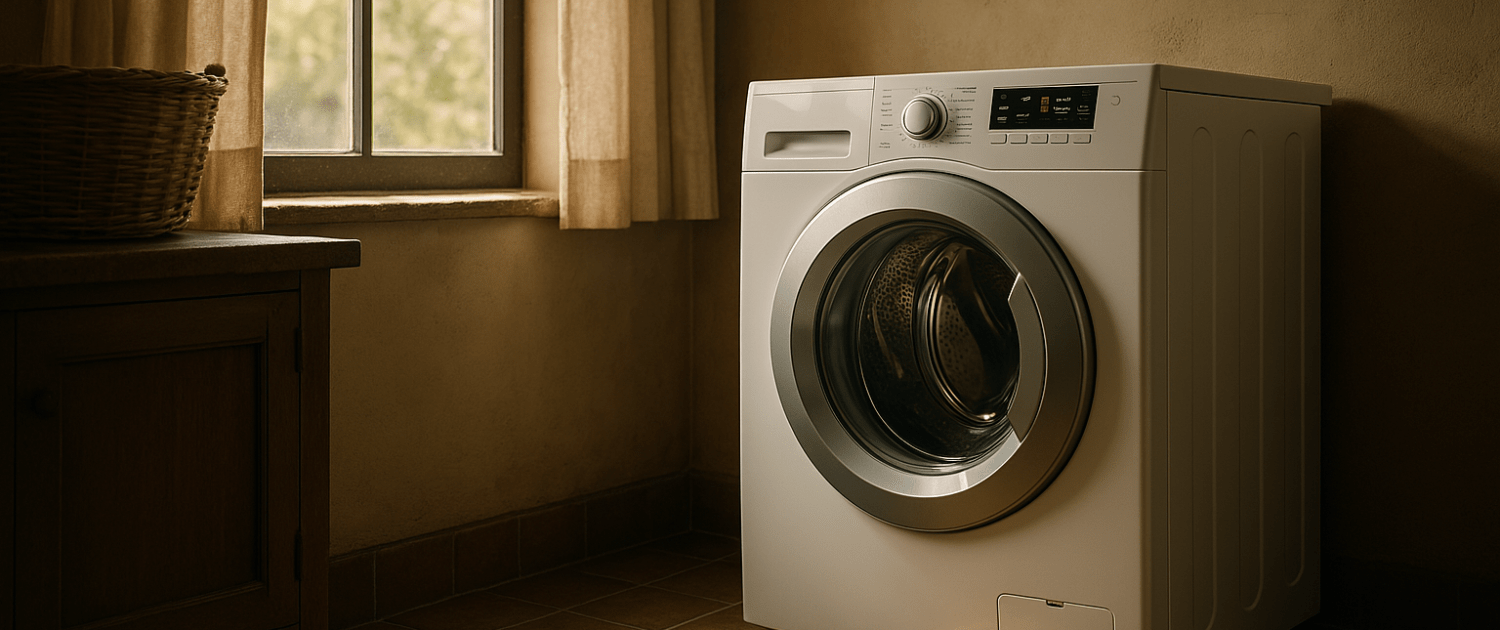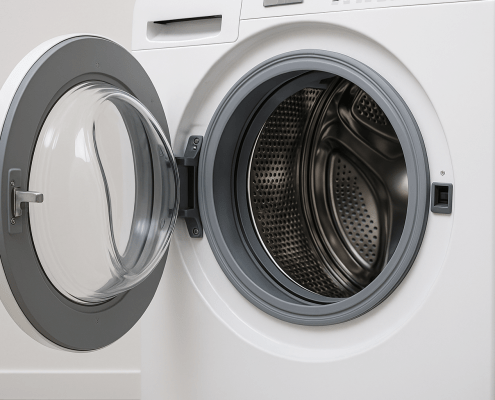All-in-One vs Standalone Washer/Dryer: What’s Best?
Steven E / Monday May 12, 2025
When your trusty washer and dryer setup starts to break down, you’ll need a replacement. As inconvenient as a breakdown can be, it gives you a chance to upgrade your laundry setup! But here’s the question: which option is better for your household – the all-in-one washer dryer or standalone units?
If you need a replacement part for any of your appliances, you can use your model number to find what you need at AppliancePartsPros.com. We also have thousands of free DIY troubleshooting and repair guides to help you fix your appliance yourself.
Let’s weigh the pros and cons of both options!
The information in this article may not apply to your specific appliance model. We recommend consulting your manufacturer’s documentation or contact us with any questions.
All-in-one washer/dryer
An all-in-one washer/dryer crams both a typical front-loading washing machine and a ventless condenser dryer into one cabinet. The idea is to provide a complete wash-to-dry cycle while taking up half the space.
These 2-in-1 appliances aim to fully wash and dry your dirty piles of laundry. Simply toss in clothes, add detergent, select your settings, and walk away. Later, freshly cleaned and dried clothes are ready for wearing or putting away. No more soggy clothes sitting in baskets!
Pros of an all-in-one unit
Having both a washer and dryer packed into one space-saving box has some sweet advantages.
- It cuts your appliance footprint in half, which is great for small homes or apartments!
- You skip having to manually move soaked clothes from the washer into a separate dryer since it handles the full laundry cycle.
- These machines often don’t need special venting for moisture exhaust since they use an internal condensation system instead. This makes installation easier.
- All those components packed tightly together make these run pretty quietly too. Say bye to ear-piercing spin cycles!
Best uses for all-in-one combos:
- Tiny households that don’t generate tons of laundry
- Fits better in compact spaces like apartments or RVs
- Elderly folks and those unable to easily transport wet laundry
- Venting limitations or multi-story vent runs
- Reducing noise from having two running appliances
So for light laundry loads in tight quarters, a combo washer/dryer can be a great convenience.
Cons of an all-in-one unit
Squeezing a washer and dryer into one machine does come with a few performance compromises, though:
- Very small laundry capacity per load
- Crazy slow drying times
- Higher water and energy usage
- Can’t concurrently wash & dry
- More prone to breakdowns
- Less flexible features
Pros of standalone units
When looking at buying separate standalone washing machines and clothes dryers, you get the best specialized designs for each appliance. Let’s check out some benefits:
Washing machine:
- Huge laundry drums fit bigger loads
- Faster spin speeds extract more water, reducing drying time
- Various cycle options handle delicate to bulky items
- Additional features like steam enhance cleaning
Dryers:
- Bigger drums make batch drying faster and easier
- Powerful heating elements and airflow
- Flexible venting configurations increase efficiency
- Moisture sensors prevent over-drying
- Anti-wrinkle cycles keep clothes fresh
And you know what’s even better? You can wash AND dry loads at the same time with standalone appliances. Talk about efficiency! This freedom is a game-changer for tackling piles and piles of laundry in big households.
Cons of standalone units
- Takes up more space than a single combo unit. This can be a problem if space is limited
- Buying two major appliances instead or one tends to be more expensive
- Higher repair and maintenance costs over time
- Manual transfer of wet laundry
Decide what’s best for you
When checking out combo units versus standalone washing machines and dryers, just take a moment to think about your own home laundry needs:
- What’s your available space? Tight squeeze or spacious?
- How large is your household? Lots of laundry generated?
- Got a packed schedule? Need speed to keep up?
- Sound sensitivity? Noise could be an issue.
- Venting constraints? Good airflow needed?
Think about questions like these to figure out if an all-in-one fits your situation or if separate specialized appliances make more sense. Be real about your laundry volumes and home layout.
More information
Thanks for reading! If you have any other appliance repair needs or projects, you can find more resources including our DIY blog at AppliancePartsPros.com. There, you can enter your model number to order the exact parts you need. Most orders arrive in two business days.
You can also reach our award-winning customer service team at 1-877-477-7278, chat with a pro on our website and watch thousands of free video tutorials on our YouTube channel.
With nearly a decade of experience in providing top-notch customer service regarding appliance parts and repair, Steven enjoys sharing practical advice, troubleshooting tips, and interesting information to help readers stay informed.





